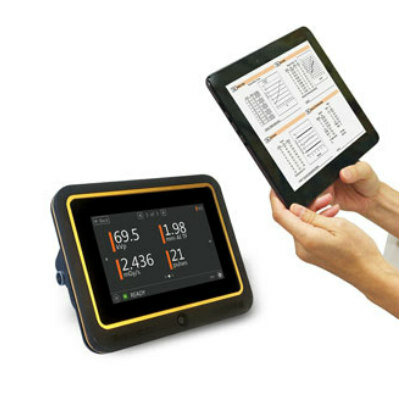Lung Cancer Patients to Benefit from New Tumor-Tracking Technique
By MedImaging International staff writers
Posted on 26 Nov 2012
Medical physicists have devised a new tumor-tracking approach that delivers higher levels of radiation to moving tumors, while sparing healthy neighboring tissue in lung cancer patients.Posted on 26 Nov 2012
Findings have shown a survival advantage for lung cancer patients treated with higher doses of radiation. Therefore, there is an increased interest to find novel ways to better track tumors, which are in continual motion because of breathing, to up the dosage during radiation therapy without increasing harmful side effects.
After validating effectiveness in simulations, researchers have now shown that their real-time tracking technique can better predict and track tumor motion and provide higher levels of radiation to lung cancer patients and others with moving tumor targets, it can also effectively be implemented into existing clinical equipment.
The study was led by Ivan Buzurovic, PhD, a medical physics resident and researcher in the department of radiation oncology at Thomas Jefferson University (Philadelphia, PA, USA), and Yan Yu, PhD, professor, vice chair and director of medical physics at Thomas Jefferson University. The findings were published in the November 2012 issue of the journal Medical Physics.
“We’ve shown here that our system can better predict and continuously track moving tumors during radiotherapy, preventing unnecessary amounts of radiation from being administered to unnecessary areas,” said Dr. Buzurovic. “Just as important, we’ve successfully modified existing technology to integrate with the system to perform the tracking and delivery, meaning no additional robotic systems is needed.”
Cardiac and respiratory motions have been found to displace and distort tumors in the lung and other organs. Because of this, radiation oncologists must expand the margin during radiotherapy, and consequently a large volume of healthy tissue is irradiated, and vital organs next to the tumor are sometimes difficult to spare.
To try to shrink that margin, Jefferson researchers developed a new, robotic technique that better tracks tumor motion to deliver more precise radiation. The investigators applied a new control system (hardware and software) and robotic technology to existing treatment couches used for radiation therapy to determine the tracking technology’s viability in a clinical environment. They demonstrated that the technology can be incorporated onto treatment couches and validated the tumor-tracking system capabilities to follow desired trajectories. When the active tracking system was applied, irradiated planning target volume (the area set for treatment) was 20% to 30% less for medium size tumors and more than 50% for small size tumors.
“The use of tumor tracking technology during radiotherapy treatment for lung cancer would result in significant reduction in dose to critical organs and tissue, potentially decreasing the probability or severity of side effects, and thus improving cancer treatments,” Dr. Yu said.
Based on these results, it can be hypothesized that clinical implementation of real-time tracking is feasible for achieving potentially improved patient outcome. “With this new technique, it shrinks the margin, and radiation oncologists would be able to administer more radiation and faster to the tumor than conventional methods,” said Adam P. Dicker, MD, PhD, professor and chairman of the department of radiation oncology at Thomas Jefferson University. “And a higher, more targeted dose means a better cure in lung cancer.”
Related Links:
Thomas Jefferson University














